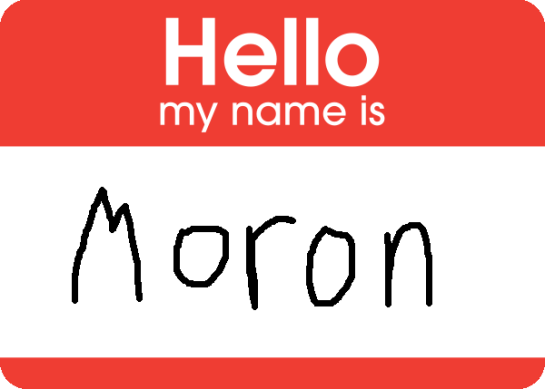Corporates Suck: A Personal Take
What Happened to the Thrill?
When I first started working with computers, I revelled in the challenges and the opportunities for learning. The sense of accomplishment and the thrill of solving complex problems were genuinely exhilarating.
And to Employee Happiness?
However, my initial enthusiasm took a nosedive when I rubbed up against the corporate world. What caused this transformation? Many argue that the corporate environment has a knack for leaching joy, replacing it with turgid egocentric managers intent on feathering their own nests at everyone else’s expense.
What’s Wrong with Corporate Culture?
In corporates, the methods used to assess and drive performance often benefit these self-serving managers rather than the well-being of the workforce as a whole. Indeed, even the very pursuit of “performance” is a theatre of fiction.
Does Autonomy Matter?
The absence of autonomy in a hierarchical corporate structure further dampens the spirit. Employees lose the joy that comes from freedom and independent decision-making, turning work into a mere series of tasks.
Autonomy often serves as a cornerstone for employee happiness. The freedom to make decisions, solve problems and contribute ideas fosters a sense of ownership and, by extension, joy. But is autonomy a valued principle in the corporate world? Unfortunately, more often than not, the answer is no.
Corporate structures frequently operate within rigid hierarchies where decision-making power is concentrated at the top. Managers assign tasks and set directives, leaving little room for employees to exercise autonomy. This top-down approach not only diminishes individual contributions but also robs employees of the satisfaction derived from autonomous action.
Furthermore, when employees feel that their role is reduced to following orders, engagement plummets. The absence of autonomy turns day-to-day tasks into a checklist to be ticked off rather than a series of meaningful contributions. This lack of freedom directly contradicts the human desire for autonomy, leading to disengagement and, ultimately, a less joyful workplace.
So, does autonomy matter? Unquestionably. Granting employees a degree of autonomy can reignite the sputtering fires of joy and engagement, leading to a more productive and happier workforce. Corporates that recognise the value of autonomy take a significant step towards restoring the joy so often missing from the workplace.
Does Mastery Matter?
Mastery, or the drive to become proficient in a skill or field, can be a significant source of joy for many. But does it hold any water in the corporate setting? Unfortunately, the pursuit of mastery often takes a back seat in corporates, sidelined by short-term goals and immediate deliverables. The emphasis on quick wins and immediate results eclipses the long-term satisfaction that comes from mastering a skill or a domain.
Furthermore, the race for promotions and recognition can dilute the pure joy of mastery. Instead of gaining proficiency for the sheer pleasure of it, skills development turns into a competitive sprint, dictated by performance evaluations and peer comparisons.
So yes, mastery does matter, but it’s often undervalued or even ignored in the corporate world. Recognising the importance of mastery could be a step towards reintroducing joy into the workplace, benefiting not just the employees but also contributing to a more skilled and engaged workforce.
Does Shared Purpose Matter?
Shared purpose can be a potent catalyst for workplace joy. When employees feel they are part of something bigger than themselves, motivation and satisfaction often follow. But how well does this concept fare in the corporate landscape? Generally, not as well as it could or should.
In many corporates, the overarching goal is clear: increase shareholder value. While this aim is valid from a business perspective, it rarely stokes the fires of individual passion or a collective sense of purpose. Employees find themselves working to benefit a distant, often faceless, group of stakeholders rather than contributing to a cause that has personal or societal meaning.
Moreover, when managerial focus is primarily on self-advancement or departmental targets, the notion of a shared purpose becomes fractured. Employees start to feel disconnected from the mission of the organisation, contributing further to the drain of joy and satisfaction.
So, does shared purpose matter? Absolutely. A unified goal not only brings people together but also instills a sense of meaning in daily tasks. To reignite the lost joy, corporates should look beyond mere profits and metrics, weaving a tapestry of shared purpose that each employee can contribute to and feel proud of.
Is Work-Life Balance a Myth?
Promises of work-life balance often remain unfulfilled. With no clear boundaries, employees experience burnout, which contributes to a cycle of joylessness.
The term “work-life balance” is bandied about in corporate circles, regularly cited as a perk or aspiration within companies. But how often is this balance truly achieved? Regrettably, it’s way more espoused than actual in many corporate settings.
In the push for self-aggrandisement and personal wellbeing of executives and senior manager, work demands often spill over into personal time. Employees find themselves tethered to their jobs through smartphones and laptops, blurring the lines between work and life. The upshot is a skewed balance that leans heavily towards work, pushing personal time and activities to the fringes.
This lopsided equation isn’t just detrimental to personal lives; it also drains the joy out of work itself. When employees can’t switch off, the chance for relaxation and rejuvenation dwindles, leading to increased stress and burnout. The absence of real work-life balance adversely affects not just individual well-being but also overall job satisfaction.
So, is work-life balance a myth? In many corporates, unfortunately, yes. But it doesn’t have to be. Companies that genuinely commit to work-life balance as a tangible practice rather than a buzzword can contribute to a more joyful, engaged workforce. Maybe enlightened corporates might choose to stop paying lip service to work-life balance and start making it a lived reality for their employees.
What About Personal Growth?
Corporates typically offer limited scope for personal growth. Focused on role-specific skills, companies overlook the broader aspects of development, reducing the job to a set of mundane activities rather than a platform for holistic growth.
Personal growth is a factor that contributes to an individual’s overall sense of happiness and well-being. However, its role in the corporate setting is often underemphasised, overshadowed by the focus on immediate performance indicators.
Companies frequently provide training and development opportunities, but these are usually confined to vain attempts to moderate behaviours, or on improving skills that directly benefit the organisation. This approach tends to neglect broader aspects of an individual’s personal and professional development. The result is a narrowed scope for growth that pertains solely to the job at hand, leaving little room for the nourishment of other facets like emotional intelligence, leadership qualities, or even hobbies and interests that can enrich lives.
The absence of opportunities for holistic personal growth can lead to stagnation. Employees may find that their roles become monotonous and unfulfilling, devoid of the challenges and learning experiences that bring joy and meaning to work.
So, what about personal growth? It’s crucial but often overlooked in the corporate agenda. A shift towards including personal development as a core part of employee growth can make work more fulfilling and joyous. After all, an individual is more than the sum of their job-related skills, and recognising this can be a step towards creating a more joyful and engaged workforce.
A Pit of Despair
In my own experience, the joy I initially found in computer-related challenges has descended into a pit of despair when involved with corporates. What was once a playground of innovation and problem-solving has for many become a bland, monotonous treadmill of routine. The constant grind, coupled with the absence of creativity and personal growth, transforms work into something far less fulfilling than it could be.
This despair isn’t just a personal anecdote but a sentiment that resonates with many who find themselves caught in the corporate machinery. The mental toll this takes is widely underestimated. Over time, the absence of joy and fulfilment leads to a range of problems, from decreased productivity to more serious issues like burnout and serious mental health concerns.
The “pit of despair” isn’t merely a dramatic term; it’s a reality for many. When a workplace fails to nourish the human aspects that make life worthwhile, it risks creating an environment where despair thrives. Therefore, addressing the factors that contribute to this state is not just an individual necessity but also a corporate imperative.
Can Corporates Change?
It’s not all doom and gloom. With a shift in focus, companies can recalibrate their methods to foster a more human-centric approach, aiming for a win-win scenario where both profits and joy can coexist.
Final Thoughts
Corporates don’t have to be joy-draining monoliths. By reevaluating the way they operate, these institutions can not only better their performance but also enhance the lives of the people who make that performance possible.



